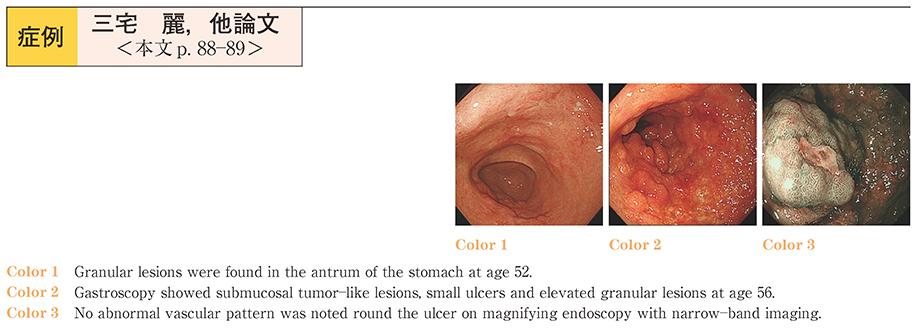- J-STAGE home
- /
- Progress of Digestive Endoscop ...
- /
- Volume 84 (2014) Issue 1
- /
- Article overview
-
Rei Miyake
Department of Inflammatory Bowel Disease, Kitasato University Kitasato Institute Hospital
-
Tomohisa Sujino
Department of Inflammatory Bowel Disease, Kitasato University Kitasato Institute Hospital
-
Taku Kobayashi
Department of Inflammatory Bowel Disease, Kitasato University Kitasato Institute Hospital
-
Yukako Kato
Department of Inflammatory Bowel Disease, Kitasato University Kitasato Institute Hospital
-
Masaru Nakano
Department of Endoscopy, Kitasato University Kitasato Institute Hospital
-
Hiroshi Serizawa
Department of Inflammatory Bowel Disease, Kitasato University Kitasato Institute Hospital
-
Noriaki Watanabe
Department of Inflammatory Bowel Disease, Kitasato University Kitasato Institute Hospital
-
Kanji Tsuchimoto
Department of Inflammatory Bowel Disease, Kitasato University Kitasato Institute Hospital
-
Tomohiro Suemori
Department of Pathology, Kitasato University Kitasato Institute Hospital
-
Seijiro Morinaga
Department of Pathology, Kitasato University Kitasato Institute Hospital
-
Norifumi Hibi
Department of Inflammatory Bowel Disease, Kitasato University Kitasato Institute Hospital
2014 Volume 84 Issue 1 Pages 88-89
- Published: June 14, 2014 Received: - Available on J-STAGE: June 21, 2014 Accepted: - Advance online publication: - Revised: -
(compatible with EndNote, Reference Manager, ProCite, RefWorks)
(compatible with BibDesk, LaTeX)


